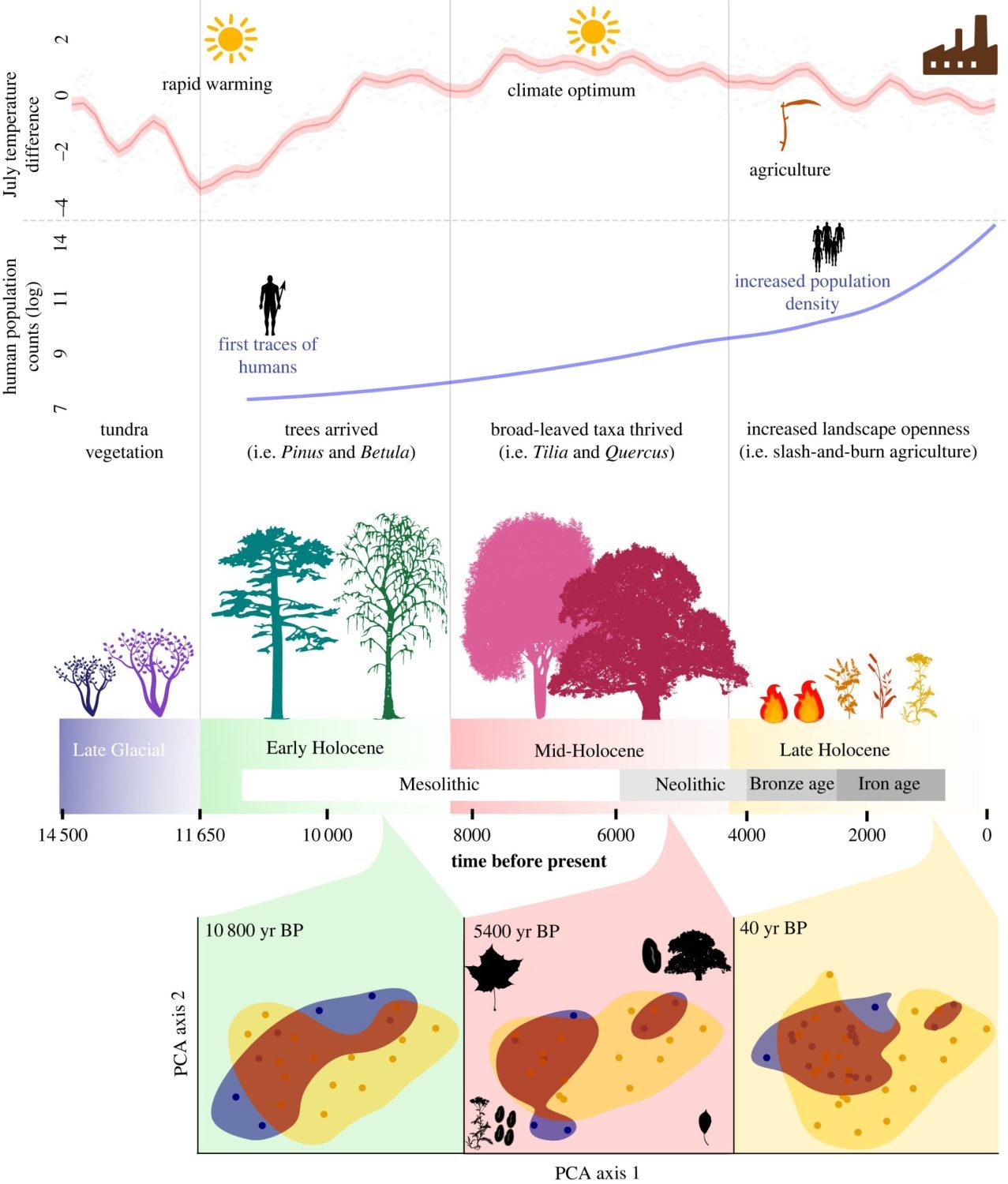New paper about diversity dynamics over millennial time scales

Diego has just published the last chapter of his PhD thesis in the Proceedings of the Royal Society B. In this paper, Diego together with Carlos, Meelis and Triin (from Landscape Biodiversity group) show that dark diversity - the set of suitable but locally absent species - can be useful to examine how biodiversity is changing over time. Accordingly, using a sedimentary pollen data, they found that although biodiversity has increased in northern Europe due to warmer climatic conditions and human impact over the last 14,500 years, dark diversity has increased faster than observed diversity. Such faster increase in dark diversity indicates that, although several suitable taxa arrived in the region, just a fraction of those taxa could establish locally in most potential sites, revealing an expansion lag. When comparing the functional traits of taxa in observed and dark diversity, the authors found that the expansion lag was mostly related to the functional traits of taxa. Specifically, most taxa in dark diversity were both functionally redundant as well as more dispersal limited and stress intolerant, when compared to observed diversity, suggesting that dark diversity taxa could not establish locally because taxa displaying higher dispersal capacities and stress tolerance were already occupying their potential niche. Examining dark diversity dynamics may open new pathways to study both palaeoecology and biodiversity change in the Anthropocene, since it informs how much, how fast and in which direction biodiversity changes occur, which is a longstanding issue and timely task in ecology.
Trindade, D.P.F., Carmona, C.P., Reitalu, T., & Pärtel. M. 2023. Observed and dark diversity dynamics over millennial time scales: fast life-history traits linked to expansion lags of plants in northern Europe. Proceedings of the Royal Society B doi: 10.1098/rspb.2022.1904.